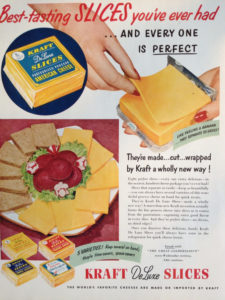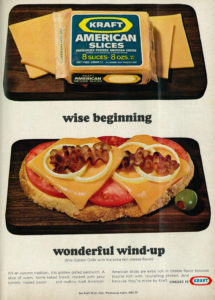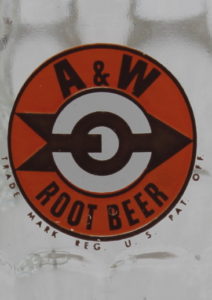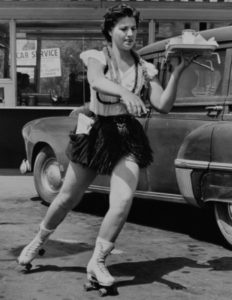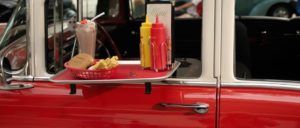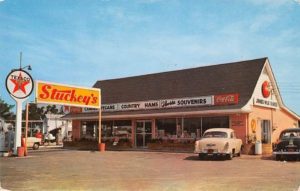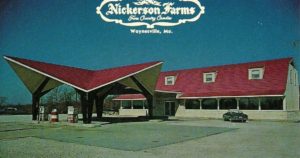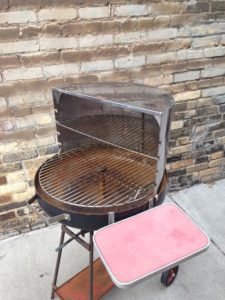
At presstime, we’re experiencing one of those sopping-wet March snow dumps we get in my area every couple of years. Two days ago, my wife and I were walking the dogs in 70 degree sunshine, today, I’m looking out at eight inches of white stuff.
No matter. The previous warm weather put me in mind of a wonderful ritual that would take place every couple of weeks during summertime in Miami, Oklahoma in the 60’s: the backyard cookout.
The ritual was simple, but profound: dinner, normally prepared on the stove, would be provided via dad’s flat barbecue grill. That, to a kid, made ALL the difference.
We had the luxury of a screened-in porch. That meant no flies, no mosquitoes, and less wind blowing the red checkered tablecloth around. But I also experienced many a backyard cookout in the real elements. My grandparents’ homes in Texas and Iowa were frequent sites, and the back yards were utilized as grand dining rooms in the highest sense of tradition. I would give anything to spend a 1967 summer day savoring the sights, smells, and tastes of a summer cookout. But memories are all we have. So let’s share a few.
First and foremost was the grill. In 90% of the cases, it was a simple inexpensive affair, purchased locally at a Woolworth’s or Western Auto. Our fathers and grandfathers knew that it wasn’t the quality of the cooking appliance that made the difference, it was the meat preparation, the waiting until the charcoal was perfectly ready, and most importantly, the love that went into the cooking that made it taste perfect.
I seem to recall my Texas grandfather having a nicer cooking rig. I wish my memories were clearer,perhaps one of my cousins can step in and confirm or deny. Anyway, Pop Tinsley had been cooking for kids, grandkids, and great-grandkids in that same back yard since the 20’s, so some fifty years later, it was likely that he had suitably durable equipment for the purpose. After all, he utilized a WWI-era practice bomb for a tree-hung swing!
While dad or grandpa handled the meat, mom or grandma would handle the side dishes.
This might be a big bowl of homemade cole slaw, potato salad, or a big pot full of pork and beans, or all three! There might be a big casserole filled with red Jello with banana slices, too.
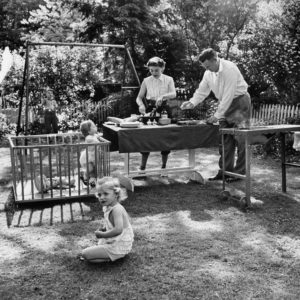
Drinks would be Kool-Aid, iced tea, or lemonade. These would be served in paper Dixie cups. Likewise, the food would be eaten on thin paper plates. I might grab two to stack for more durability, but mom and dad would prefer I use only one. Surviving a Depression will do that to you.
Then it would be time to sit down. And no, it wasn’t a fancy glass patio table and padded chairs.
No, dinner would be enjoyed sitting on a real wooden picnic table. My frugal father sprang for a genuine redwood model, complete with decorative wrought iron frame. It traveled with us through three moves. The redwood finally rotted away in the 90’s, but I still have that frame. One day soon, it will once again form the foundation for a durable table that will be passed on to my own offspring.
The aforementioned red-checked plastic tablecloth, easily hosed off afterwards, protected the wood from spills from unsteady small hands. The wind would blow the edge up over the table if you didn’t watch it. However, that same wind would keep the flies and skeeters in check.
Once the feast was over, it was time for the grownups to sit and enjoy a smoke, a cold beer, and the sight of us kids playing. If it was a particularly pleasant evening, the festivities might stretch until dusk, when the fireflies would be seen rising from the lawn.
Nowadays, I have a wonderful back yard, huge in comparison to the tiny plots in the new middle-class subdivisions that have sprung up all over the country. And it has seen its share of pleasant cookouts, although the grilling was done over gas, the paper cups were plastic, and the wooden picnic table was, indeed, a glass model with padded chairs.
But I suspect that my own kids will someday look back in fondness, and perhaps wax philosophically about the days when their old man would fire up the grill and carry on a tradition that stretched back three generations, at least.
